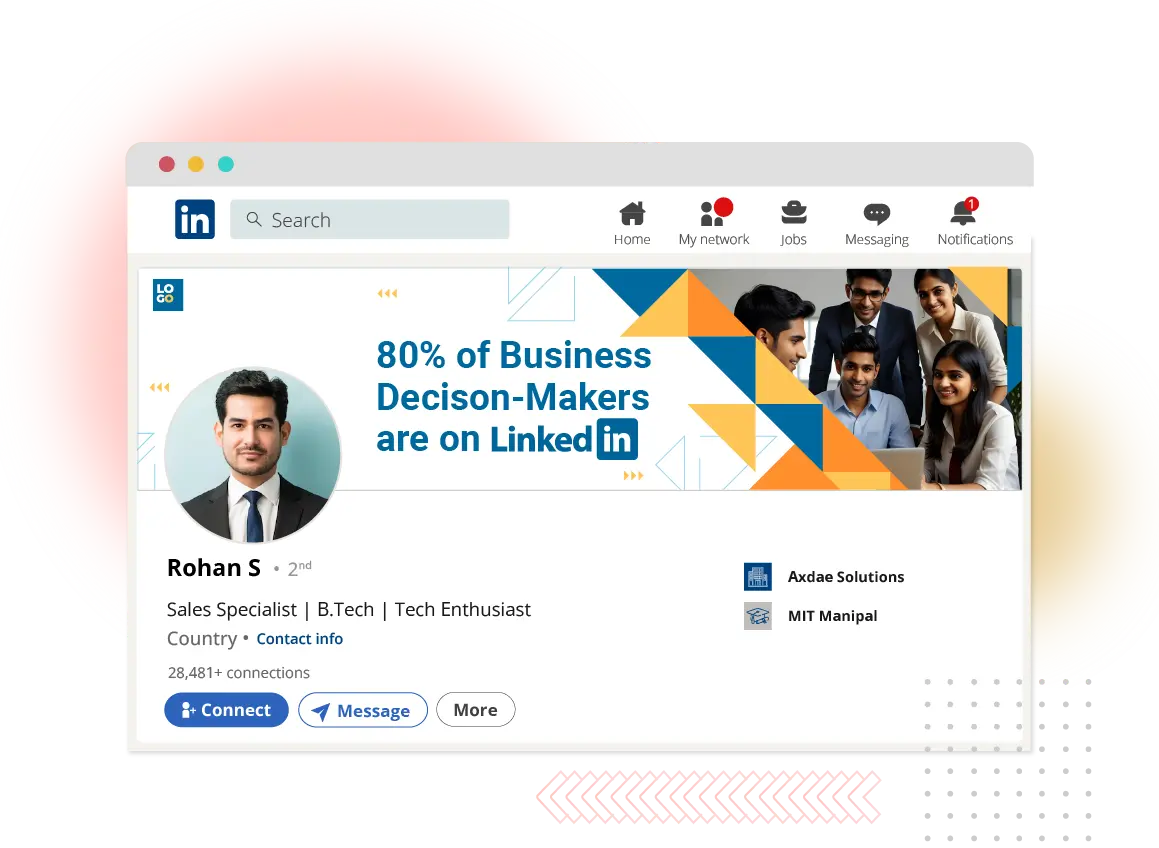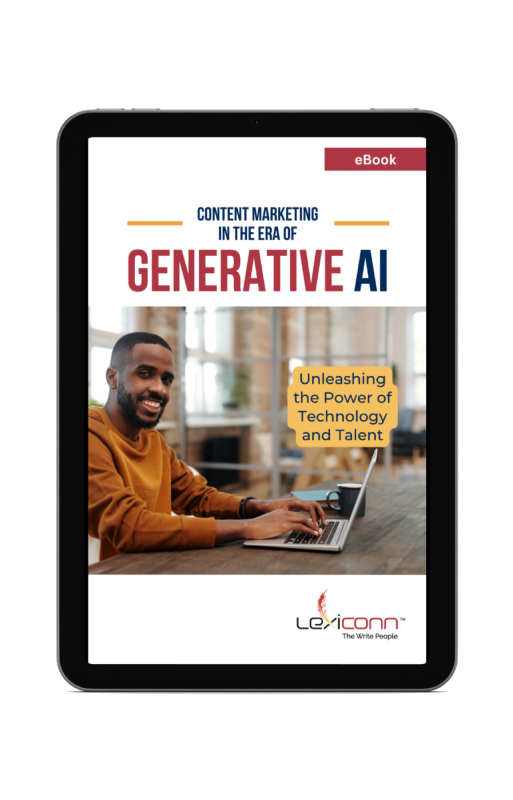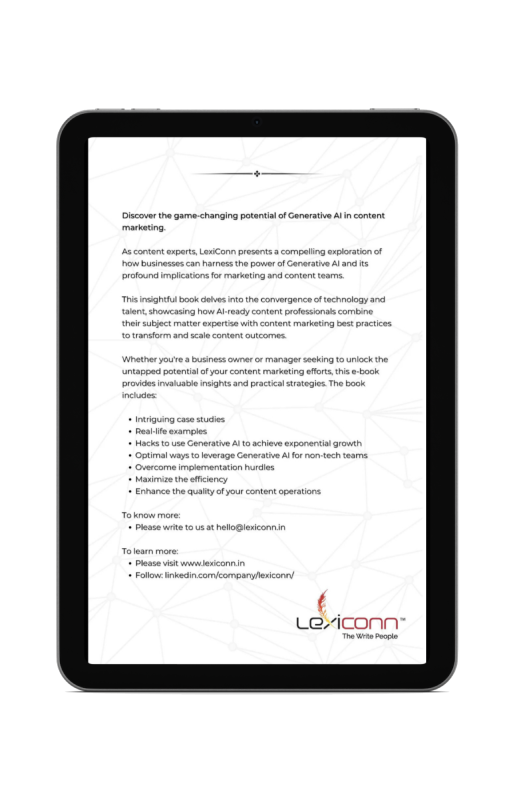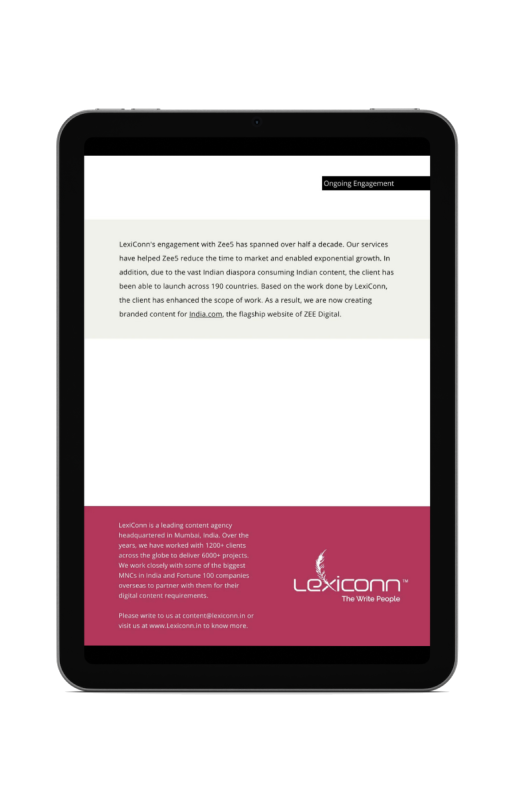(Source)
In 2025, the digital landscape is more competitive than ever, with over 70% of businesses leveraging social media for marketing and global advertising spend projected to surpass $200 billion. Yet, amidst this explosion of activity, one truth remains clear: brands that master social media branding and align it with their business goals are the ones reaping the rewards. Why? Because a well-executed strategy doesn’t just drive engagement—it delivers measurable marketing ROI.
With content repurposing and innovative approaches to digital content, brands are not only strengthening their brand positioning but also maximizing returns on every dollar spent. In fact, research shows that brands that implement strategic outbound engagement see up to 3.5x higher engagement rates than those that don’t prioritize it. The question is:
Are you ready to turn your social media presence into a revenue powerhouse?
Let’s dive into how aligning your branding with business objectives can transform your strategy—and your bottom line.
The Importance of Social Media Branding
Why Social Media Branding Matters
- Building Trust
Trust is the cornerstone of any successful business relationship, and social media plays a pivotal role in establishing it. According to research, 81% of consumers need to trust a brand before making a purchase. Social media provides the perfect platform for fostering this trust through authenticity, transparency, and consistent messaging.
For example:
- Responding promptly to customer queries on platforms like Twitter or Instagram demonstrates reliability.
- Sharing behind-the-scenes content or user-generated posts humanizes your brand, making it more relatable.
- Enhancing Brand Recognition
A consistent social media presence ensures that your audience recognizes and remembers you. Platforms like Instagram and LinkedIn allow brands to showcase their unique tone, values, and aesthetics through visuals, captions, and interactions.
A cohesive identity—whether it’s through color schemes, typography, or content style—creates familiarity. This familiarity fosters trust and makes your brand stand out in a sea of competitors.
- Strengthening Brand Positioning
Effective social media branding helps carve out a unique space in the market. Whether you’re a B2B leader sharing thought leadership articles on LinkedIn or a lifestyle brand posting aspirational content on Instagram, social media allows you to communicate your value proposition clearly and consistently. This strengthens your brand positioning, ensuring that customers understand what sets you apart.
- Driving Emotional Connections
Great branding tells a story—and social media is the stage where this story unfolds in real time. Through posts, stories, videos, and even memes, brands can evoke emotions that create lasting impressions.
For instance:
- A heartfelt campaign on Instagram Reels can generate virality while showcasing your values.
- Sharing success stories or testimonials on Facebook reinforces credibility.
The Role of Consistency in Branding
Consistency is key to effective social media branding. When your messaging, visuals, and tone align across all platforms, you create a unified experience for your audience. This cohesion not only builds trust but also improves engagement rates.
According to studies:
- Brands with consistent messaging see up to 23% higher revenue growth compared to those with inconsistent branding.
- Cohesive branding increases recognition by ensuring that customers know what to expect from your content.
Social Media as a Brand Differentiator
In today’s competitive market, where attention spans are shorter than ever, standing out requires more than just good products or services—it requires strategic branding. Social media enables businesses to differentiate themselves by:
- Showcasing their personality: A witty Twitter account or visually stunning Instagram feed can set you apart.
- Engaging directly with audiences: Real-time interactions foster loyalty and make customers feel valued.
- Leveraging platform-specific features: From LinkedIn polls to Instagram Reels, using platform tools creatively can enhance visibility.
Steps to Align Social Media Branding with Business Goals
Step 1: Define Your Target Audience
Your audience is at the heart of every successful strategy. Without knowing who you’re speaking to, even the most creative campaigns will fall flat.
Start by identifying,
- Demographics: Age, gender, location.
- Psychographics: Interests, values, behaviors.
- Pain points: What challenges do they face that your product/service solves?
Use tools like Google Analytics or social listening platforms to gather insights. Once you know your audience inside out, tailor your messaging and visuals accordingly. This not only strengthens brand positioning but also ensures higher engagement rates.
Step 2: Choose the Right Social Media Platforms
Not all platforms are created equal—and not all of them will suit your business goals. Here’s how to decide:
- LinkedIn: Perfect for B2B businesses and thought leadership.
- Instagram: Ideal for visual storytelling and connecting with younger audiences.
- Twitter: Great for real-time updates and conversations.
- Facebook: Still relevant for community building and paid ads.
Focus on platforms where your target audience spends the most time. Spreading yourself too thin across every platform dilutes your efforts and weakens your social ROI.
Step 3: Develop a Consistent Brand Voice and Visual Identity
Your brand voice is how you communicate; it should reflect your personality and values. Whether it’s professional on LinkedIn or playful on Instagram, consistency is key.
Similarly, visual identity—logos, colors, fonts—should remain uniform across platforms. This reinforces recognition and strengthens trust over time.
For example:
- Use the same profile picture on all platforms.
- Stick to a specific color palette for posts.
- Create templates for recurring content types like quotes or announcements.
Consistency in voice and visuals enhances both brand impact and loyalty while making it easier for audiences to identify you instantly.
Step 4: Create Goal-Oriented Content
Content is king—but only if it serves a purpose.
To align content with business goals:
- Identify what type of content resonates with your audience (e.g., videos vs. blogs).
- Map content types to specific objectives:
- Educational content (e.g., tutorials) = Thought leadership.
- User-generated content = Community engagement.
- Promotions = Sales conversions.
Leverage content repurposing to maximize efficiency.
For instance:
- Turn a blog into an infographic for Instagram.
- Use snippets from webinars as LinkedIn posts.
This approach ensures every piece of content contributes directly to both short-term metrics and long-term branding goals.
Measuring Progress: Tracking ROI on Social Media Efforts
(Source)
One of the biggest challenges businesses face is understanding how to measure ROI from social media effectively. Unlike traditional advertising channels where results are straightforward (e.g., sales from TV ads), social media requires nuanced tracking.
Here’s how to measure success:
- Define Metrics Based on Goals
- For sales: Track conversions using UTM parameters or e-commerce analytics.
- For engagement: Monitor likes, comments, shares.
- For awareness: Measure impressions and reach.
- Use Analytics Tools
Platforms like Facebook Insights or LinkedIn Analytics provide detailed performance reports. Third-party tools like Hootsuite or Sprout Social can offer deeper insights across multiple channels.
- Calculate ROI
Use this formula:
- Track Intangibles
Not all benefits are monetary—improved customer sentiment or increased brand mentions also add value over time.
By consistently analyzing these metrics, businesses can refine strategies for better performance while ensuring every dollar spent delivers measurable results.
Tips to Maximize ROI Through Social Media Branding
To truly maximize returns on social media efforts:
1. Leverage Influencer Marketing
Influencer marketing has become a cornerstone of modern social media strategies, with brands projected to spend $9.29 billion on influencer campaigns in 2025. Partnering with influencers who align with your brand positioning can amplify your reach and enhance credibility.
- Why it works: Influencers build trust with their followers by sharing authentic content. This trust translates into higher engagement and conversions for brands they endorse.
- How to do it right:
- Identify influencers whose audience demographics match your target market. Tools like HypeAuditor or Influencity can help analyze follower data and engagement rates.
- Focus on long-term partnerships rather than one-off collaborations to build a consistent brand narrative.
- Measure success using KPIs such as engagement rate, reach, and conversions rather than just follower count.
- Pro Tip: Micro-influencers (10,000–50,000 followers) often deliver better ROI due to their highly engaged audiences.
By integrating influencer marketing into your social media strategy, you can reinforce your brand impact while driving measurable results.
2. Experiment with A/B Testing
A/B testing, or split testing, is a powerful tool for optimizing social media campaigns. It involves comparing two variations of a post or ad to determine which performs better.
- What to test:
- Headlines or captions: Test different tones (e.g., playful vs. professional).
- Visuals: Compare static images vs. videos or carousels.
- Calls-to-action (CTAs): Experiment with phrases like "Shop Now" vs. "Learn More."
- Timing: Post at different times to identify when your audience is most active.
- How to run effective tests:
- Use platform-specific tools like Facebook Ads Manager or LinkedIn Campaign Manager for built-in A/B testing features.
- Test one variable at a time to isolate its impact.
- Ensure a statistically significant sample size for reliable results.
- Why it matters: A/B testing removes guesswork from your strategy, enabling you to make data-driven decisions that improve engagement and conversions.
By continuously refining your content through A/B testing, you can boost your social ROI while tailoring campaigns to audience preferences.
3. Engage Actively
Social media is not just a broadcasting platform—it’s a space for two-way communication. Active engagement fosters loyalty and improves visibility through platform algorithms.
- What active engagement looks like:
- Respond promptly to comments, messages, and mentions.
- Use interactive features like polls, Q&A sessions, or live videos to encourage participation.
- Share user-generated content (UGC) to build community and trust.
- Impact on ROI: Engaging directly with your audience strengthens relationships and increases the likelihood of conversions. It also boosts algorithmic favorability, ensuring your content reaches more people organically.
Active engagement transforms followers into brand advocates, enhancing both short-term metrics like engagement rates and long-term goals like customer retention.
4. Stay Updated on Trends
The social media landscape evolves rapidly, with new features and trends emerging constantly. Staying updated ensures your brand remains relevant and competitive.
- Key trends in 2025:
- Short-form video content (e.g., Instagram Reels, YouTube Shorts) continues to dominate due to its high engagement rates.
- AI-driven personalization is reshaping how brands interact with audiences.
- Live streaming is gaining traction as an effective way to build real-time connections.
- How to adapt:
- Regularly monitor platform updates and algorithm changes.
- Experiment with new formats or features early (e.g., augmented reality filters).
- Analyze competitors’ strategies for inspiration.
- Why it matters: Adapting quickly to trends keeps your brand top-of-mind for audiences while positioning you as an industry leader.
By embracing innovation, you can enhance your brand positioning and maintain a competitive edge.
5. Invest in Paid Campaigns
While organic reach is valuable, it’s often insufficient in today’s crowded digital space. Paid campaigns ensure your content reaches the right audience at the right time.
- Types of paid campaigns:
- Retargeting ads for users who’ve interacted with your website or social profiles.
- Lookalike audience targeting to reach potential customers similar to existing ones.
- Sponsored posts or stories optimized for specific goals like website traffic or lead generation.
- Best practices:
- Set clear objectives (e.g., increase conversions by X% in Y months).
- Use analytics tools like Meta Pixels or Google Analytics to track performance.
- Allocate budgets strategically based on campaign goals and historical data.
- ROI considerations: Paid campaigns offer precise targeting capabilities that maximize returns by focusing resources on high-value prospects.
Investing in paid social media efforts complements organic strategies, delivering measurable outcomes aligned with business goals.
Conclusion
Social media isn’t just about posting pretty pictures or witty captions—it’s about strategy. By aligning your efforts with clearly defined business goals through thoughtful planning around audience preferences/platform selection/content optimization—you’ll unlock unprecedented opportunities not only enhance visibility but also drive tangible outcomes tied directly towards revenue growth!
At LexiConn—we specialize in helping businesses craft impressive narratives designed to elevate their presence online via impactful strategies rooted in a deep understanding of nuances surrounding modern-day digital ecosystems! Ready to take the next step in transforming presence? Visit us at www.lexiconn.in or drop us a line at [email protected] or book aFREE 30-minute Content Consultation Session
Boost your Content Strategy.
Download the Free eBook now.
Unlock Generative AI's potential for content marketing success. Unearth its impact on teams and businesses. Witness real-life examples and case studies, showcasing AI-driven content ingenuity.







